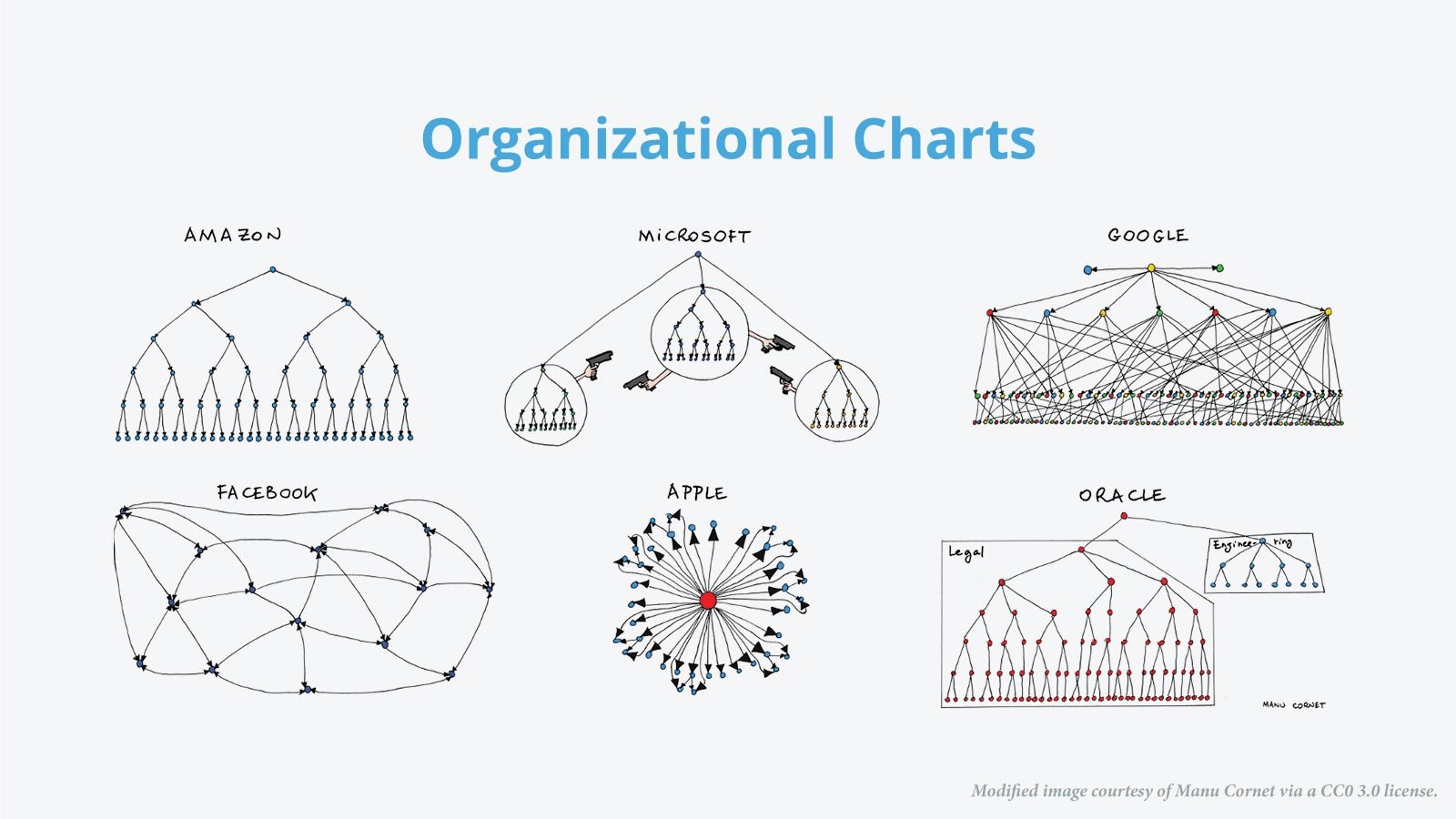Our recent trip to the Gilbane Conference 2015 in Boston was fascinating on several levels. We spent time with customers and analysts and other people in the industry who brought a remarkable diversity of needs, sophistication, and points of view regarding internal communications and especially employee social networks.
For the record, when we say “employee social network” or “ESN” we mean a digital vehicle for unstructured peer-to-peer communication that can support many-to-many communications (and we don’t mean email, though you can (and no doubt will) make the point that email does do this, with often unpleasant effects).
What’s funny about the above illustration? Nothing. It’s just true. And the many forms of organization structure no doubt account for the many different views of ESNs.
At Gilbane I was struck by just how far apart opinions were on the subject. We’ve heard them all before, but not all in the same room. The conference was a pretty special room where giant multinationals and small creative agencies sat side by side. New, up-and-coming businesses, and mature giants of their industries sat in small seminar-like rooms in hot debate.
Here are 5 observations on the topic of ESNs coming out of these discussions:
- Opinions on the pros and cons of employee social networks range wildly, depending on the type of organization.
Depending on the management style and corporate structure, there are people who think that ESNs are the answer to everything from engagement to innovation to productivity.Perceived risks are equally varied. From the fear that employees will be wasting too much valuable time, to being overwhelmed with information. Interestingly, many had seen ESNs create silos, where the goal had been to eliminate them. Recent advancements in tech and IT philosophy have made it possible to leapfrog those challenges however. I also heard an objection I hadn’t heard before – and I really thought I’d heard them all. One organization was concerned that employees would use them to organize unions.
- Employee social networks of some kind provide value to nearly every type of organization.
Even the most cautious of organizations, with nearly 150,000 employees with low levels of education and a dozen different languages represented, found some value in having an employee social network.This was true even as others calculated the multi-million dollar price tag of having employees check a network or intranet a few minutes a day. The calculation-maven failed to factor in the time-savings a quick check-in can create.
- Employee social networks are only ONE piece of a comprehensive employee communications program.
There were no participants in the conference who believed that the bulk of their important employee communications could rely solely on an ESN. They also need libraries, news, collaboration, and emergency communication channels.
- Nobody has horror stories about inappropriate content.
This was interesting. I’ve been working in online communities and content for 20 years, and every company considering any kind of user or employee communication channel has had anxieties over people using their freedom of expression to post vulgarity, profanity, and negativity.Of the dozen or so HR, Marketing, and IT people participating in the conversation, not one of them felt this was a valid concern anymore. We’ve all been exposed to how this works long enough to realize that it’s very, very rare for employees to be that foolish on their internal networks. None of us even had a second-hand anecdote.
- People finally get how important mobile is.
If your ESN or intranet is not mobile, you’re cutting off too many people too much of the time. It’s no longer acceptable to consider any kind of ESN that isn’t mobile.
What’s fascinating here, is that every organization is different, every leadership structure is different, and every organizational culture is different. Each of these points of view have merit – and challenges. When they come together in a room, they learn a lot from one another. Our job? To listen and enable all of them. Employee social networks need to help your organization as it is and as you wish it to be. You should not have to reinvent your core company structure just to make use of them.
